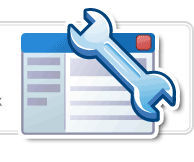A/B testing without being penalised by Google
 With a simple A/B test, you can immediately know what version of your web page offers the best results or has the best conversion rate. However, performing such a test can be expensive, because Google punishes some practices. So, here are a few tips.
With a simple A/B test, you can immediately know what version of your web page offers the best results or has the best conversion rate. However, performing such a test can be expensive, because Google punishes some practices. So, here are a few tips.
As a webmaster, your aim is to constantly improve your website, in order to achieve the best possible results. The numbers tell the tale, and that is why you want users to test different versions of the same site, in order to determine which one works best. This can be an ordinary test (different versions of a website), an A/B test (visitors are redirected to different URLs, each pointing to another version) or a test with multiple variables (with changes of some parts of the site, in order to study the visitors’ behaviour in response to these changes).
These tests are pretty interesting, but they are not without danger. Because Google might e.g. regard these different pages as duplicate content, and thus penalise your site by giving it a lower ranking!
So, how should you proceed? Google provides some useful tips in its Google Webmaster Central:
- Do not use cloaking: make sure that Internet users and search engines get to see the same content. In other words, avoid building a separate version of the website for search engines.
- Use the “canonical” tag. This tag lets the search engine know that some pages have been duplicated, and it also tells which one is the original (or “canonical”). This way, you can avoid any problem related to duplicate content.
- Given the temporary nature of the test, use a 302 redirection instead of a 301.
- Try to keep the test as short as possible in time, and put everything back in place on the site once the test is over (redirection, other URLs, etc.)
These simple measures will not cost you much and will allow you to avoid having your site penalised by Google!


